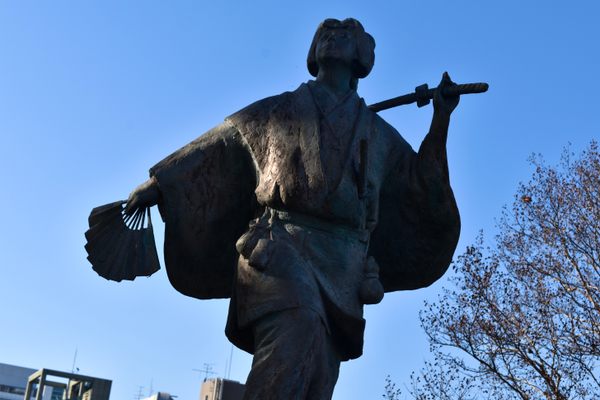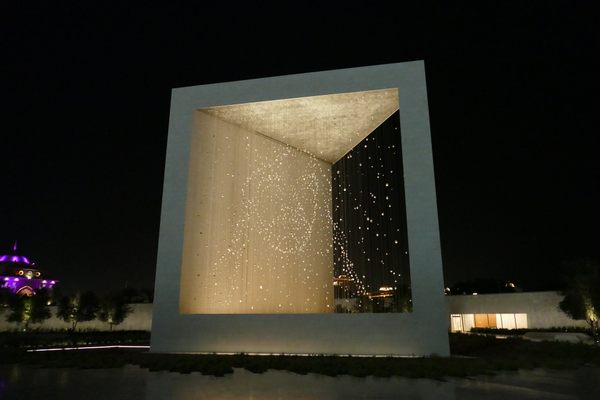AO Edited
Girl Puzzle Monument
An art installation commemorates journalist Nellie Bly's undercover reporting inside a New York asylum.
On September 22, 1887, intrepid investigative journalist Nellie Bly was asked by the New York World to go undercover and commit herself to one of New York’s asylums. “We do not ask you to go there for the purpose of making sensational revelations. Write up things as you find them, good or bad; give praise or blame as you think best, and the truth all the time. But I am afraid of that chronic smile of yours,” her editor told her, as recorded in the 35,000-word exposé, Ten Days In a Mad-House. “I will smile no more,” replied Bly.
Bly, who went undercover as Nellie Brown, found much to “give blame.” Bly spent a total of 10 days in the asylum on Blackwell’s Island in New York’s East River, now known as Roosevelt Island, and before that as Minnehanonck among Indigenous Lenape people. In her account, Bly describes inedible food and horrendous conditions. She and other patients would be forced to spend all day sitting on hard, wooden benches. Nurses and doctors were often cruel to patients, and Bly recalls how she and others would be scrubbed in freezing bathrooms until “my teeth chattered and my limbs were goose-fleshed and blue.”
“What, excepting torture, would produce insanity quicker than this treatment?” She wrote. “Here is a class of women sent to be cured. I would like the expert physicians who are condemning me for my action, which has proven their ability, to take a perfectly sane and healthy woman, shut her up and make her sit from 6 A. M. until 8 P. M. on straight-back benches, do not allow her to talk or move during these hours, give her no reading and let her know nothing of the world or its doings, give her bad food and harsh treatment, and see how long it will take to make her insane. Two months would make her a mental and physical wreck.”
More than 130 years later, her pioneering reporting has been memorialized in the monumental art installation The Girl Puzzle. The sculpture is made up of four seven-foot-tall faces cast in bronze that line a lengthy walkway dotted with silver mirrored orbs, distorting the faces. The faces represent the many women, both recorded and otherwise, who would’ve been committed to the Blackwell asylum: a young girl, an Asian-American woman, an African-American woman, and a queer woman. Each bronze face is split apart, allowing the city to peek through. The piece is a pertinent reminder that progress is built on the sacrifices of people like Bly. At the end of the walkway, at the tip of the island, is the colossal silver-bronze face of Nellie Bly herself.
American sculptor Amanda Matthews created the piece, which was installed in late 2021 on the island’s northern tip beside the island’s lighthouse. Matthews named the piece after Bly’s first published article, also headlined “The Girl Puzzle.” In the 1885 piece for The Pittsburg Dispatch, Bly argued that women deserved well-paying, interesting work. The sculpture is carved with some of Bly’s own words from the piece.
The asylum Bly visited in 1887 has since long been torn down. Today only a piece of it remains, the Roosevelt Island Octagon Tower, which has been renovated into luxury apartments. Matthew’s The Girl Puzzle is just down the road, an enduring testament to the power of Bly’s work.


















Follow us on Twitter to get the latest on the world's hidden wonders.
Like us on Facebook to get the latest on the world's hidden wonders.
Follow us on Twitter Like us on Facebook